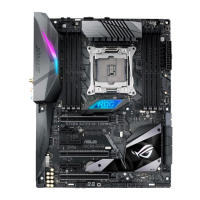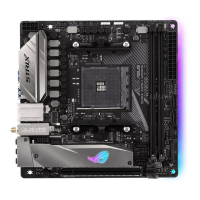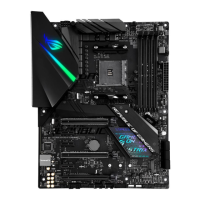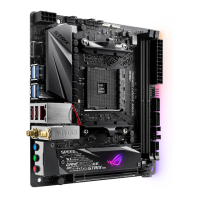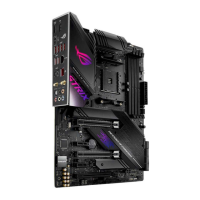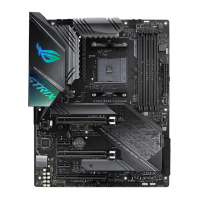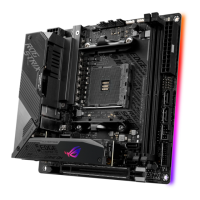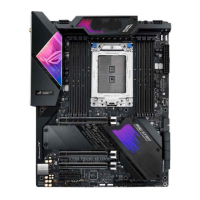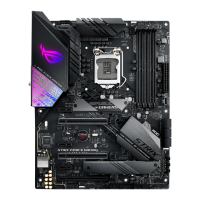Do you have a question about the Asus ROG Strix X299-E Gaming and is the answer not in the manual?
Overview of the motherboard, its components, and layout.
Step-by-step guide for assembling PC system components.
Instructions for updating the BIOS using USB BIOS Flashback.
Details on connecting rear panel ports and audio I/O connections.
Steps for powering on the system for initial setup and POST.
Introduction to the ASUS UEFI BIOS interface and its functionalities.
Guide to navigating the BIOS setup program, including EZ and Advanced modes.
Personalize your BIOS screen by saving and accessing favorite items.
Configure overclocking-related settings for CPU and memory.
Access advanced system settings for CPU and other devices.
Access special function utilities like EZ Flash 3 and Secure Erase.
Instructions on how to update the motherboard BIOS using provided utilities.
Overview of supported RAID levels and their definitions.
Guide to configuring RAID settings within the UEFI BIOS interface.
Steps to create a RAID driver disk for OS installation.
| Non-ECC | Yes |
|---|---|
| Memory slots type | DIMM |
| Number of memory slots | 8 |
| Supported memory types | DDR4-SDRAM |
| Maximum internal memory | 128 GB |
| Supported memory clock speeds | 2133, 2400, 2666, 2800, 3200, 3300, 3333, 3400, 3466, 3600, 3733, 3866, 4000, 4133 MHz |
| Processor socket | LGA 2066 (Socket R4) |
| Processor manufacturer | Intel |
| Compatible processor series | Intel® Core™ i7 |
| USB 2.0 connectors | 1 |
| Number of SATA II connectors | 0 |
| USB 3.2 Gen 1 (3.1 Gen 1) connectors | 2 |
| BIOS type | UEFI AMI |
| ACPI version | 6.0 |
| BIOS memory size | 128 Mbit |
| USB 2.0 ports quantity | USB 2.0 ports have a data transmission speed of 480 Mbps, and are backwards compatible with USB 1.1 ports. You can connect all kinds of peripheral devices to them. |
| USB 3.2 Gen 1 (3.1 Gen 1) Type-A ports quantity | 4 |
| LAN controller | Intel® I219-V |
| Wi-Fi standards | 802.11a, Wi-Fi 5 (802.11ac), 802.11b, 802.11g, Wi-Fi 4 (802.11n) |
| Bluetooth version | 4.2 |
| Component for | PC |
| Motherboard chipset | Intel® X299 |
| Audio output channels | 7.1 channels |
| Motherboard form factor | ATX |
| Windows operating systems supported | Windows 10 |
| RAID levels | 0, 1, 5, 10 |
| Manual | No |
| Depth | 244 mm |
|---|---|
| Width | 305 mm |
